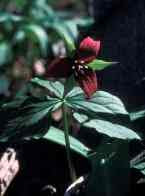So, when I found a few on this land, I thought about taking them out. Then I started looking at them through the eyes of the ecosystem. I learned they fix nitrogen, a most valuable trait in restoring worn out and devastated soils. They can also act as a nurse plant for young trees, shading them lightly, protecting them, and providing extra nitrogen as they get started. And if that's not enough, the berries have 17 times the lycopene content of tomatoes! Autumn olive may be seen as invasive in some eyes, but I hold it to be an ecosystem healer and a free health food! We made a few pints of autumn olive berry jam this fall.

I'd highly recommend trying it; sort of a complex tart flavor that can be balanced with as much sugar as you want, but don't overpower it.
So here's what I've learned from Elaeagnus umbellata: dense growths of any species are a sign that it has traits or abilities that make it well suited for those places, and dense growths of anything don't last long. All ecosystems are trying to build fertility as they go through the process of ecological succession. In the case of autumn olive, it grows well where native ecosystems have been displaced and, very likely, where soils were trashed by efficiency-minded farming practices. It grows well in places that need its healing, nitrogen-fixing skills. If you seek to get rid of it, acknowledge this and replace it with something native that can do the same job. I'd also bet that this plant will put itself out of business as the fertility of the ecosystem improves.
One might come to another anaolgy involving "aliens": they do the jobs that natives (a.k.a. gringoes) can't or won't. Why do we depend on migrant labor to tend and harvest our food? Because we're incapable or too damn lazy! Let's not deport them unless we're prepared to take their places. So instead of annihilating a very helpful plant in the name of botanical purity (one could really make some analogies here!), consider what it does; then make some jam!




No comments:
Post a Comment